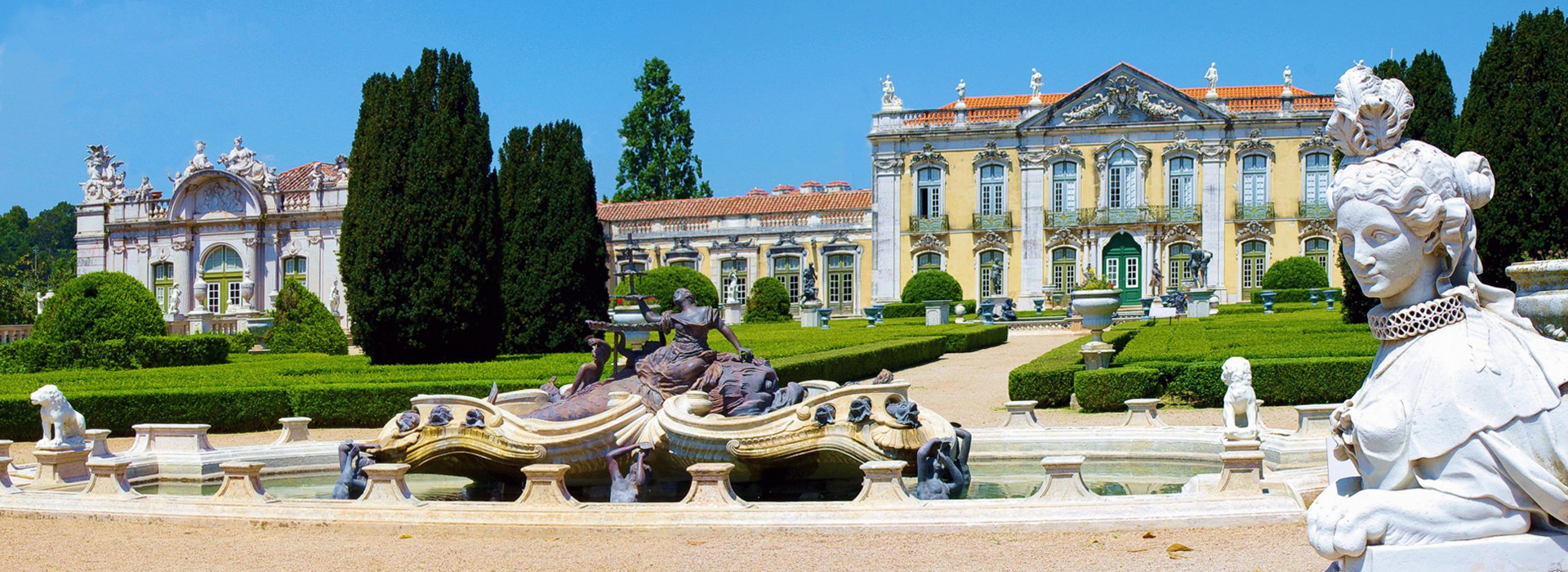
Palace of Queluz: Skip the line tickets

With this entrance ticket you can gain entry to the Palace of Queluz at your leisure. Book with confidence with FREE CANCELLATION. Buy online before you arrive to avoid queues and have the convenience of the e-ticket on your phone…
• Entrance to the National Palace of Queluz
• Entrance to the Palace Gardens
• The price includes a single entrance to the venue. Tiqets covers the cost of payment processing and provides you with customer service seven days a week.
• It is strictly forbidden to eat and smoke inside the Palace and grounds
• Kids under 6 get in free and don't need a ticket
• Reduced tickets for children 6-18 and seniors 65+ are available onsite
Low Season, Daily: 09h00 - 18h00, (last admission at 17h00)
High Season Daily: 09h00 - 19h00, (last admission at 18h00)

HISTORY OF THE NATIONAL PALACE OF QUELUZ
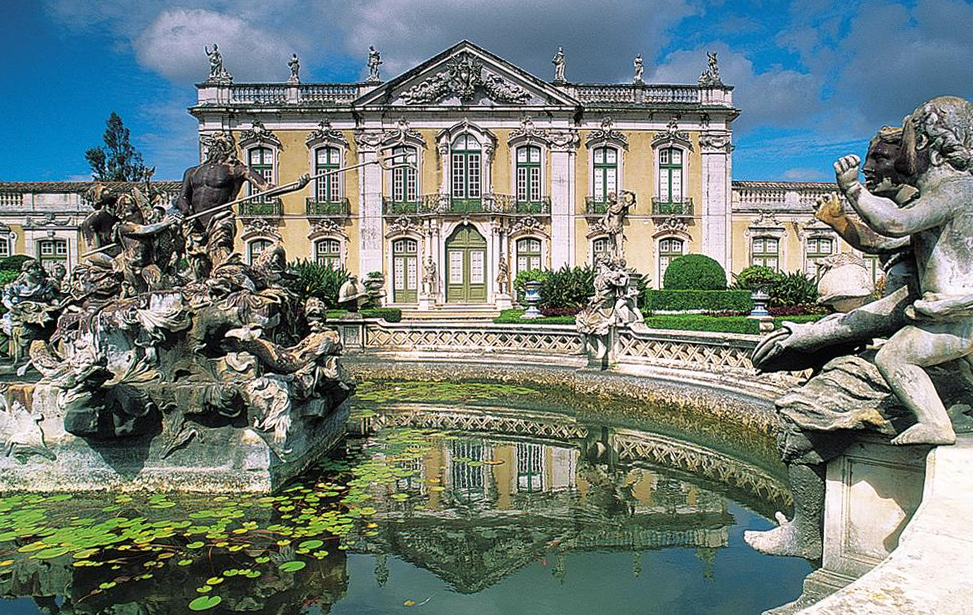
Work to adapt the existing country house into anything like a palace was carried out between 1742 to 1758 by Mateus Vicente de Oliveira, who previously worked on the palace at Mafra as an apprentice. Following the announcement of the marriage of Prince Pedro to the heir to the throne, Princess Maria, in 1760, construction entered a second and more pressing period. The architect and goldsmith Jean-Baptiste Robillion took over the daunting task of creating a more worthy home fit for royalty. It was Robillion who designed and added the throne room and a pavilion of private chambers. In 1784 Manuel Caetano de Sousa took over the responsibility of construction. He made alterations to the second floor and the private apartments.
Following the fire at the Royal Complex of Ajuda, in 1794, Queluz took over the role of official Royal residence for Queen Maria I and the Prince Regent João VI. Further upgrades to the palace to accommodate the household guards and the court took place. For the poor Queen Maria, the palace was something of a gilded cage. Ever since she became a widow and the death of her oldest son, she was prone to bouts of mania and depression. The Portuguese royal family continued to live there until their departure to Brazil in 1807, to flee Napoleon's troops as they entered Lisbon under the command of General Junot.
The royal departure brought the Palace's golden age to an end. When King João VI and the Portuguese Court returned to Portugal in 1821 Queluz came to be inhabited once more under a regime of semi-exile, by Queen Carlota Joaquina. King Miguel (1802-1866) also lived in the Palace of Queluz, during the bloody and fratricidal wars that he waged against his brother Pedro IV (1798-1834), the first Emperor of Brazil and the first Portuguese constitutional monarch. Immediately after the liberal victory, Miguel died prematurely as a victim of tuberculosis, in the same room where he had been born 36 years previously.
In 1957, the Queen Maria Pavilion, the East wing annexed to the Palace, became the residence for foreign Heads of State during official visits. The Pink Palace at Queluz, over the years, had various uses. During the early 19th century it was even a zoo. The Royal Guard building across the courtyard now serves as a Pousada. The National Palace of Queluz was designated a National Monument in 1910 and has been a member of the Network of European Royal Residences since 2013.
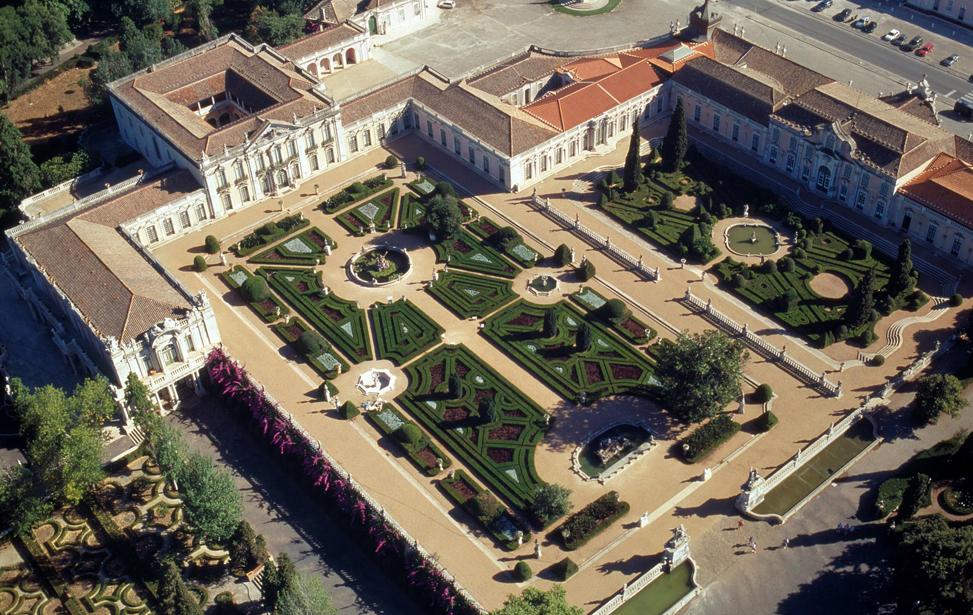
TOP TOURS OF THE NATIONAL PALACE OF QUELUZ
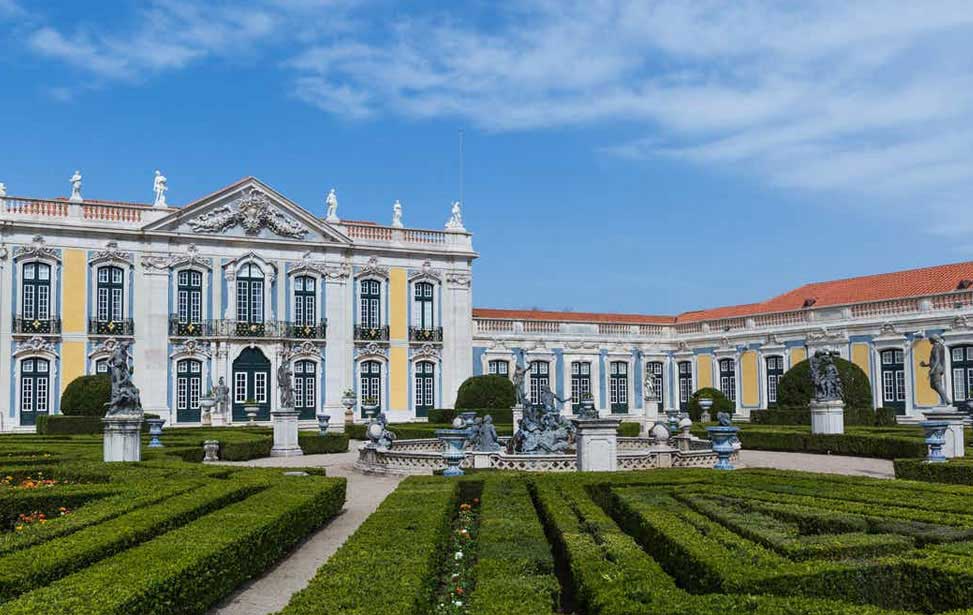
Private Day Tour: Sintra, Cascais and Queluz Palace from Lisbon
Allow yourself to be seduced by the architectural beauty of Sintra on a private full-day tour departing from Lisbon. Delve into the opulent chambers of the Queluz National Palace before heading to the UNESCO-listed village of Sintra. After ascending Sintra Mountain, you’ll encounter Pena National Palace and then gaze at the Atlantic Ocean from Cabo da Roca, Europe’s westernmost point. Conclude your private tour with free time in the charming coastal village of Cascais before being returned to your accommodation.
(10) | 8 Hr | ✔ Free Cancellation
Check Availability

Sintra Palaces Tour with Pena Palace and Quinta da Regaleira
Discover the wonders of Lisbon during this full-day, small-group guided tour of Lisbon and Sintra. First, meet your friendly local guide in Lisbon and head by minivan to its top landmarks and the Belém neighbourhood, where you can catch sight of the Monastery of Jeronimos. Learn about Lisbon’s fascinating history and snap some memorable photos. Refuel by tasting traditional Portuguese dishes. Then, head to the beautiful village of Sintra. Stroll the scenic grounds of Quinta da Regaleira and Pena Palace before returning to Lisbon. This tour is limited to a small group for a personalised excursion.
(30) | 8 Hr | ✔ Free Cancellation
Check Availability
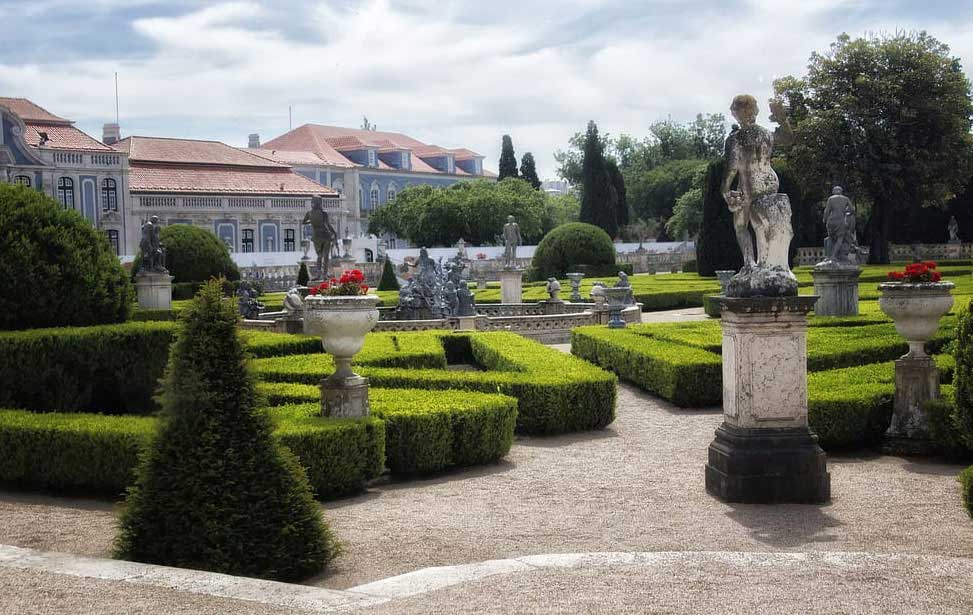
Full-Day Private Sintra Tour with Wine Tasting and Pena Palace
See the real Sintra on this private tour from Lisbon. Enjoy the benefits of a flexible schedule and customisable itinerary on this tour that takes you deeper beneath Sintra’s surface. Your expert guide will take you to the best attractions, such as the Palace of Queluz, Sintra National Palace and the ancient Moorish Castle with breathtaking views of Portugal. You won’t want to miss a visit to the westernmost point of Europe and the stunning Sintra Mountains, before returning to Lisbon. A private tour of Sintra from Lisbon.
(60) | 8 Hr | ✔ Free Cancellation
Check Availability
INTERIOR
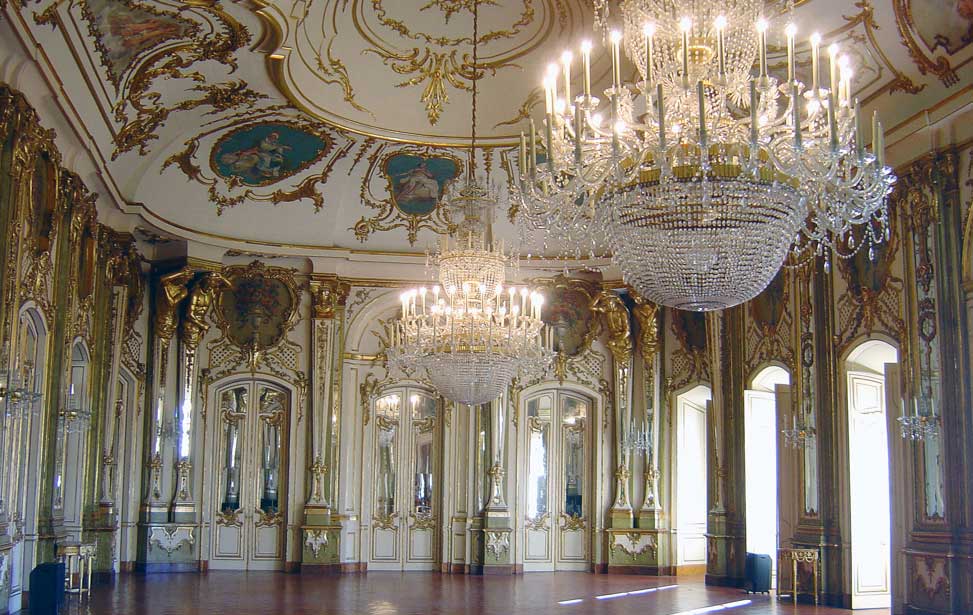
The somewhat unprepossessing main facade of the palace betrays the riches within. The Throne Room, also affectionately called the Big House, is the largest of the three staterooms in the Palace of Queluz and was built to impress. The room is decorated in the regency-rococo style, with carvings by the sculptor-carver Silvestre de Faria Lobo adorning the walls. The figurative paintings emblazoned on the ceiling are the work of the painter João de Freitas Leitão. From the centre of the ceilings, enormous chandeliers hang. Great balls and concerts were held here during the summer months hosted by Pedro and Maria. Today the Throne Room serves as the stage for state banquets hosted by the President of the Republic and other state occasions.
The Ambassadors Room is equally exuberant with decorative painted ceilings by Bruno José do Vale and Francisco de Melo. The painting of the central panel has a highly scenographic effect and depicts the royal family participating in a serenade. This is a replica of the original canvas attributed to the Italian painter Giovanni Berardi. The original was concluded in 1762 but sadly destroyed in the 1934 fire, which damaged this wing of the palace. In front of two regal thrones, there's a distinctive chequered marble floor over which, in times past, dignitaries would have traversed to kiss the hand of the Prince Regent. Large ornate mirrors hand on the walls and reflect the glint of gold gilding.
The palace kitchens remain well preserved and are now home to the Cozinha Velha restaurant, owned by the Pousada. A massive stone fireplace is the main centrepiece around which the tables are arranged under a vaulted wooden ceiling. The walls are decorated with the original copper cooking utensils. A meal at the restaurant is a perfect way to immerse yourself in the past. The desserts served here are made to original convent recipes. | Daily: 12h30 - 15h00pm/19h30 - 22h00
Contact Details
Largo do Palácio Nacional, 2745-191, Queluz, Portugal.
38° 46' 19.2" N | 09° 17' 31.2" W | +351 214 356 158
guest@pousadas.pt | Website

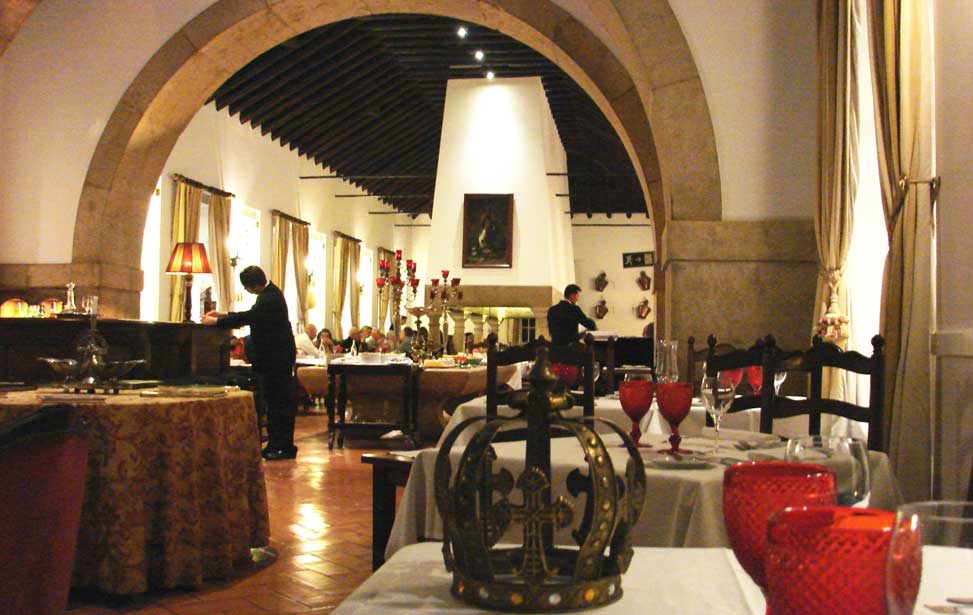
POUSADA PALÁCIO DE QUELUZ ★ ★ ★ ★
Situated in the building formerly used by the Royal Guard of the Court at the Palace of Queluz, this luxury hotel offers spacious rooms with satellite TV. The air-conditioned rooms at Pousada Palacio de Queluz are individually decorated and feature warm colours and elegant wooden furniture. All rooms have a work desk, a minibar, and an en suite bathroom with a hairdryer. Guests can enjoy authentic Portuguese dishes as well as international cuisine in Pousada Palacio de Queluz‘s restaurant, Cozinha Velha. The bar serves a selection of refreshing drinks and snacks. Room service is available.
Contact Details
Largo Palácio Nacional de Queluz, 2745-191 Queluz, Portugal. |
38° 45' 03.1" N | 09° 15' 27.1" W
+351 214 356 158 |
experience.tpds@tivolihotels.com
Check Availability
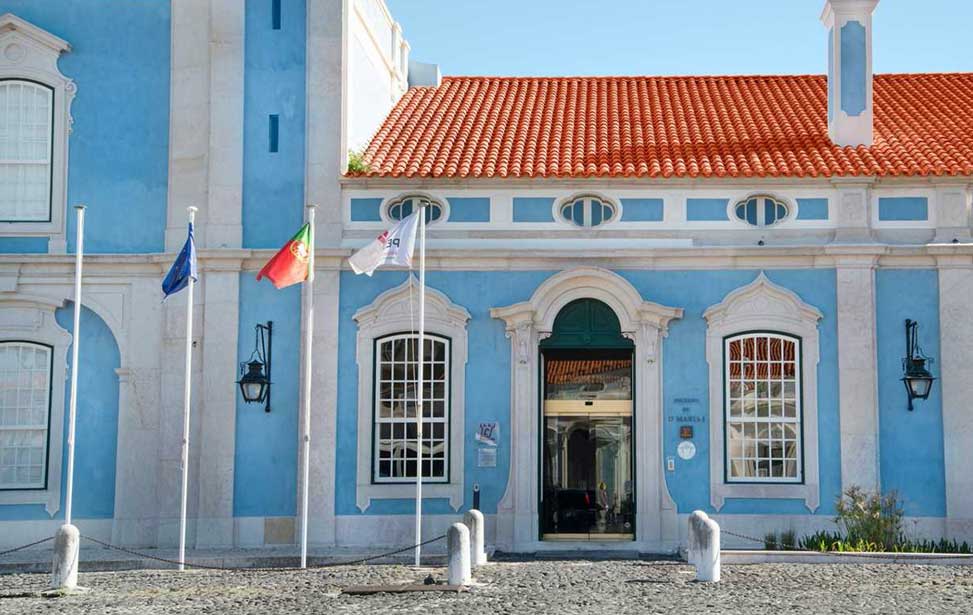
THE GARDENS AT QUELUZ PALACE
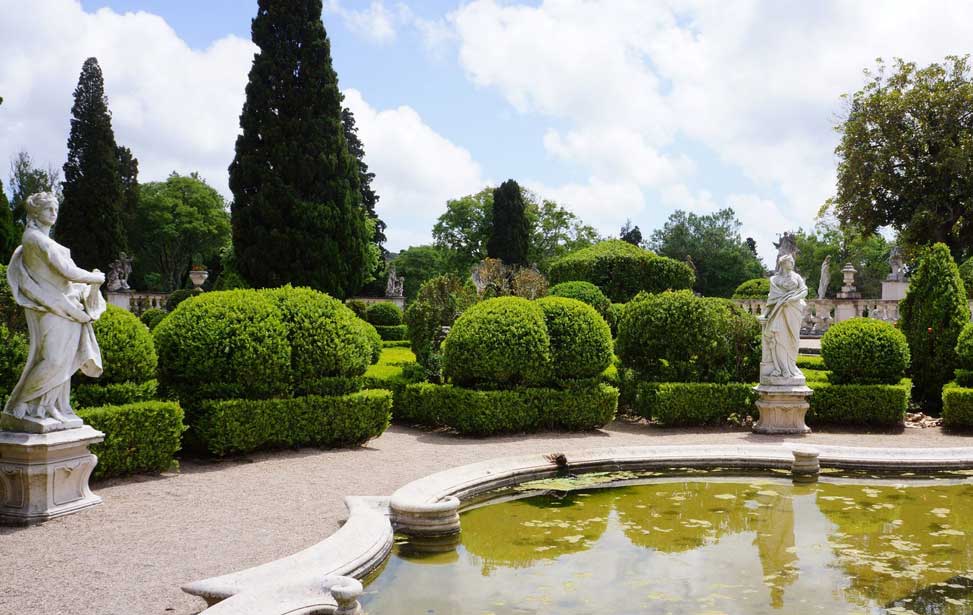
As well as the French style, there's an influence of Flemish design with the addition of canals. The largest of which lies at the foot of the Lion's Staircase. Over 100 metre long with walls decorated with tiled panels depicting seascapes and associated scenes. During the 18th century, the canals were the setting for festivals where fully rigged ships would sail in processions.
Presentations Tuesdays - Saturdays (except the last Saturday of each month): 10h00 - 13h00
Gala Last Friday of each month (with some exceptions)
Contact Details
Henrique Calado Riding Ring, Calçada da Ajuda, 1300-006, Belém, Lisbon, Portugal.
38° 42' 01.5"N | 09° 11' 59.8"W | +351 219 237 300
info@parquesdesintra.pt | Website
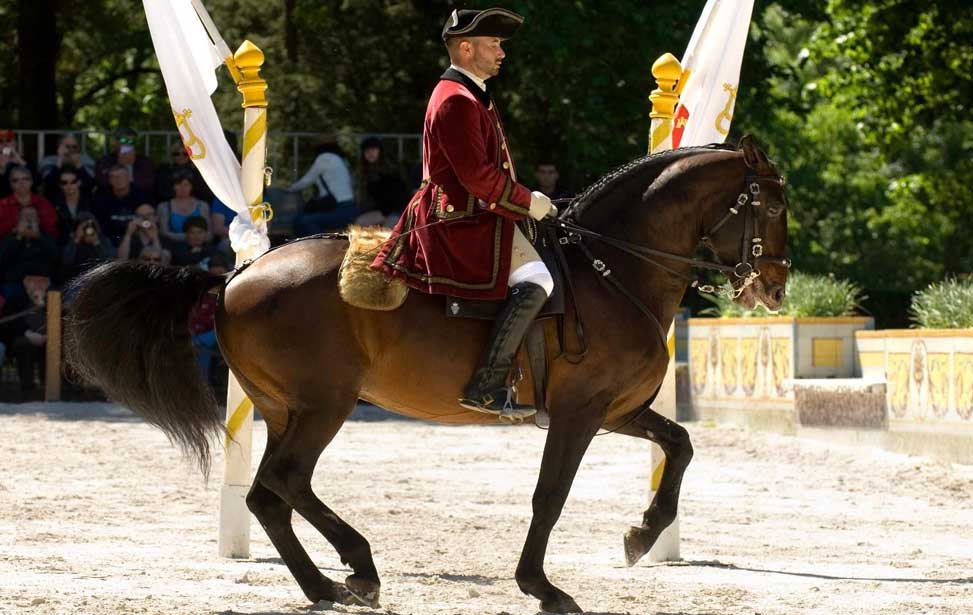
TRAVELLING TO THE QUELUZ PALACE
Queluz Palace is located half way between Lisbon and Sintra, about ten miles (16km) and is easy accessible by public transport from both places.
|
From Lisbon or Sintra take the IC19 and exit at 'Queluz – Palácio' and keep on following the signs. | |
Urban train services (comboios urbanos) from Lisbon's central train station Rossio and Sintra are regular and reliable. If coming from Lisbon alight at Queluz-Belas and if you are coming from Sintra, get off at Monte Abraão. There's a 15-20 minute walk to the Palace from both stations. |
|
|
Vimeca run services between Lisbon and Queluz:
|


 Lisbon Card Discounts
Lisbon Card Discounts






